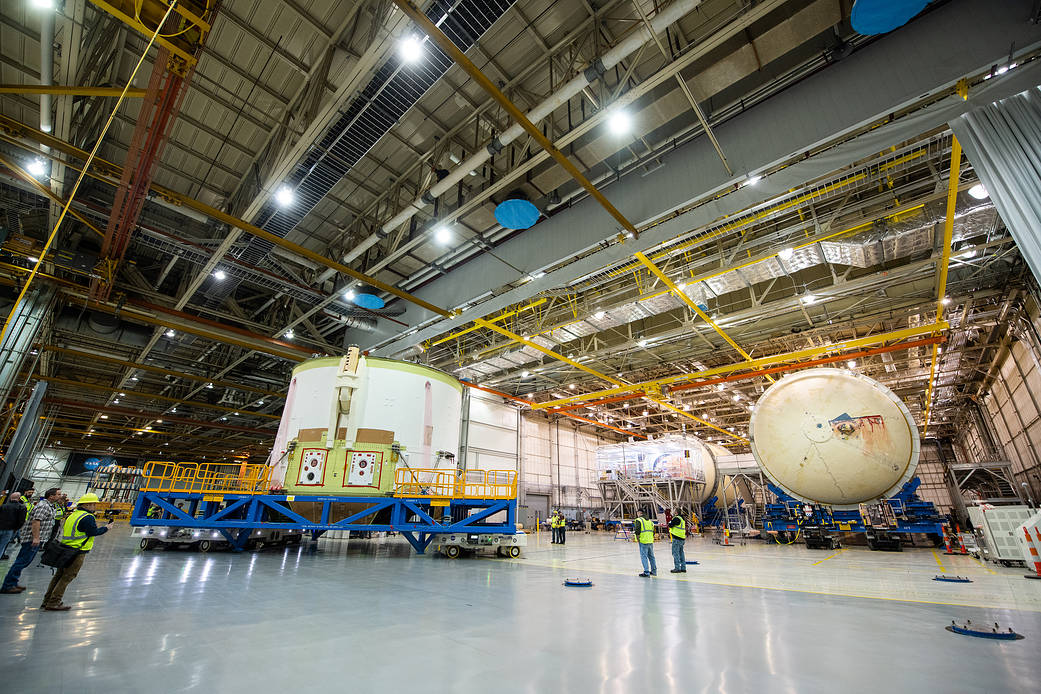
The boat-tail structure, a fairing-like cover designed to protect the bottom end of the core stage and the RS-25 engines, has been joined to one of the most complicated and intricate parts of NASA’s Space Launch System, the engine section. The engine section comprises the lowest portion of the massive core stage of the deep space rocket. It houses four RS-25 engines that will produce 2 million pounds of thrust to send the rocket and NASA’s Orion spacecraft on lunar missions. Technicians moved the engine section and boat-tail for final assembly to a climate-controlled area of NASA’s Michoud Assembly Facility in New Orleans. Engineers will use the new tool and an internal access kit to finish assembly. The tool, seen here in the blue frame around the bottom of the engine section, allows more people to work on engine section tasks at the same time — accelerating the pace of production and reducing engine section integration and assembly time. This tool, along with other production and processing improvements, will help enable the core stage to be completed this year. The liquid oxygen tank structural test article as well as the liquid hydrogen tank flight hardware for the first mission of SLS are located just behind the engine section.
NASA is charged to get American astronauts to the Moon by 2024. Our backbone for deep space exploration is SLS, the Orion spacecraft, which will launch from NASA’s Kennedy Space Center in Florida on missions to the Gateway in lunar orbit for missions to the surface of the Moon. The agency will launch SLS and Orion on their first integrated test flight around the Moon in 2020.























